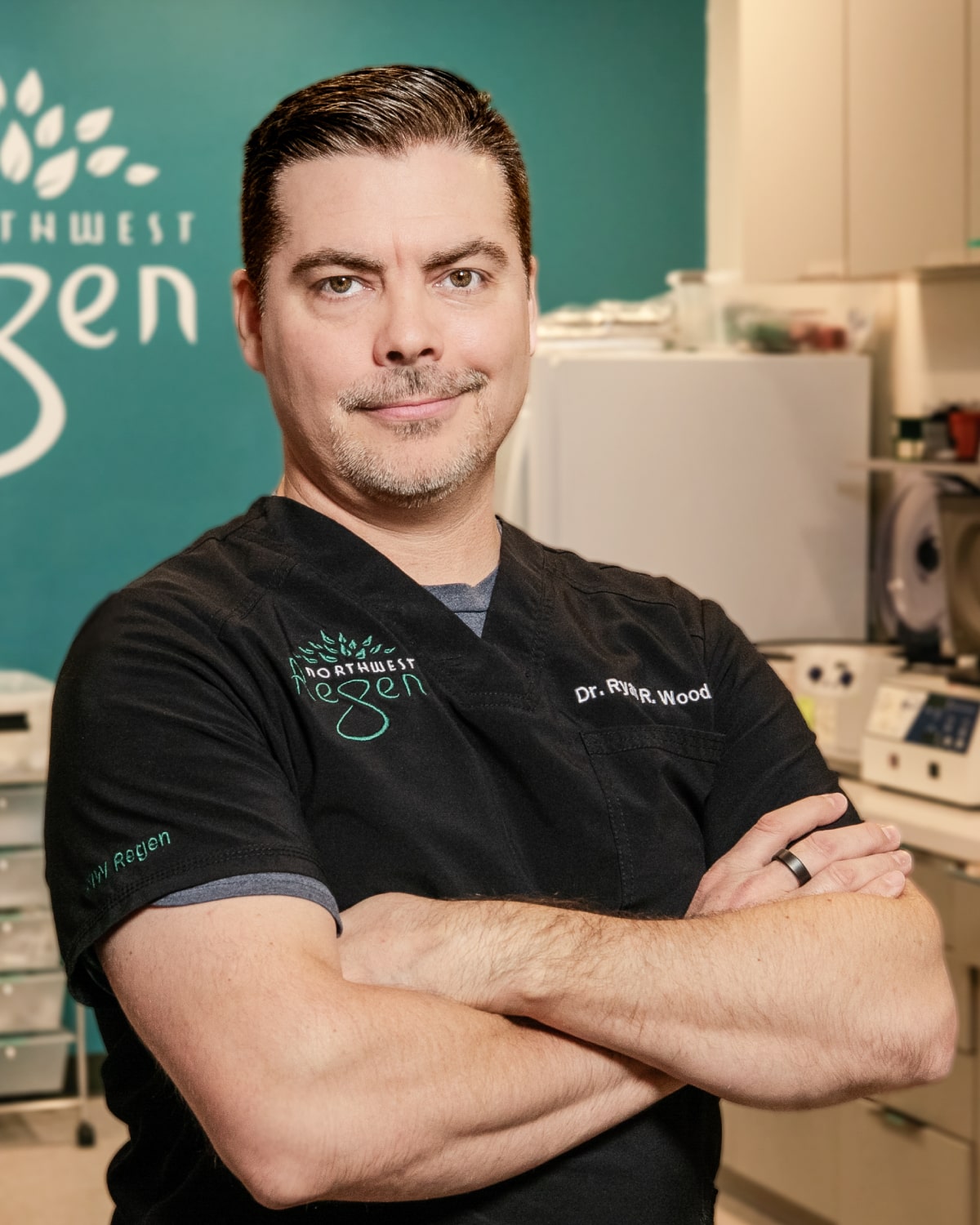Knee osteoarthritis is the most common articular disease. In fact, osteoarthritis, in general, is a major public health concern not just here in the United States, but worldwide. As such, finding the most effective and safest treatment option available is of the utmost importance, especially as it pertains to the longevity of its impacts. To that end, a recent study published in the National Library of Medicine compared the effectiveness of triple injection Platelet Rich Plasma (PRP) treatments in adult knee osteoarthritis patients at one- and two-year intervals.
What is Platelet Rich Plasma (PRP)?
PRP is an advanced biocellular therapy from a patient’s own blood that regulates inflammation, stimulates repair, and promotes remodeling of damaged tissues. The premise behind utilizing PRP for orthopedic therapies is based on its abundant growth factors and proteins. In concentrating the number of platelets by volume and then administering them through precision injections directly into the injury site, physicians can help promote the healing process across a variety of tissues.
We’ve known for some time that through PRP, inflammation is regulated, a new blood supply is promoted, new cellular growth is induced, and local stem cells are signaled to repair damaged tissues, ligaments, tendons, and joints. In fact, there have been numerous studies over the years finding that for the nonsurgical treatment of osteoarthritis, PRP injections could significantly reduce patients’ early pain and improve function. What was lacking, to some extent, was the specific understanding of how long these injections would show improvement … until now.
Numerous studies have found that for the nonsurgical treatment of osteoarthritis, PRP injections could significantly reduce patients’ early pain and improve function. What was lacking was the understanding of how long these injections would show improvement … until now.
Study Results
A new study included 68 cases (105 knees) with varying degrees of osteoarthritis. The mean age for patients was 51.7, and each patient had originally received 3 intra-articular injections of PRP one month apart. The study then followed up with these patients at one-year post-injection and then again at two years post-injection. Outcomes were measured using Western Ontario and McMaster Universities Arthritis Index (WOMAC) and Visual Analog Scale (VAS) scores.
The study was intended to assess the clinical outcomes of intra-articular PRP injection in knee osteoarthritis at one- and two-year follow-ups. Overall, it found that triple injections of intra-articular PRP given one month apart significantly relieved the symptoms of knee osteoarthritis throughout the two years. Additionally, it found that variables, such as age, sex, BMI, KL grade, baseline VAS, and baseline WOMAC did not predict the final scores.
Overall, the study found that triple injections of intra-articular PRP given one month apart significantly relieved the symptoms of knee osteoarthritis throughout the two years. Variables such as age, sex, and BMI did not predict the final scores.
How Platelet Rich Plasma (PRP) Works
Our PRP procedures begin with a simple blood draw. The blood is then processed, complying with a strict sterile lab technique, producing PRP that is tailored specifically to each individual condition. For the treatment of knee osteoarthritis, at least 4 billion platelets are needed to meet criteria for therapeutic benefit. To get 4 billion platelets per knee, enough blood must be drawn to capture that threshold, which is roughly 60cc whole blood per joint. To ensure we meet this amount, and to track our outcomes for research purposes and reproduce our injections from visit to visit, we count cells using our in-house lab hemocytometer.
We then prepare the patient for the injections with a small local anesthetic at the skin level. The PRP injection is administered directly to the areas of pain to promote repair and remodeling. Each step is carefully administered under guided imaging with ultrasound.
At Northwest Regen, we are one of the leading experts in PRP therapy in the Portland community. Our goal is always to achieve the highest quality treatment, with the least amount of discomfort, and the best possible outcome. Having the ability to effectively perform natural, non-surgical treatments such as PRP is a significant part of our tailored approach. Contact us to learn more about PRP today.

Dr. Ryan Wood is a licensed Naturopathic and Chiropractic physician focusing on interventional orthopedic and orthobiologic medicine and injection therapies as well as general musculoskeletal and non-surgical orthopedic medicine.
With almost two decades of orthopedic practice across multiple disciplines, he has the necessary experience to ensure proper diagnoses and management of complex cases.


